St Lucia's Crown
 Wednesday, December 13, 2017 at 6:32AM
Wednesday, December 13, 2017 at 6:32AM 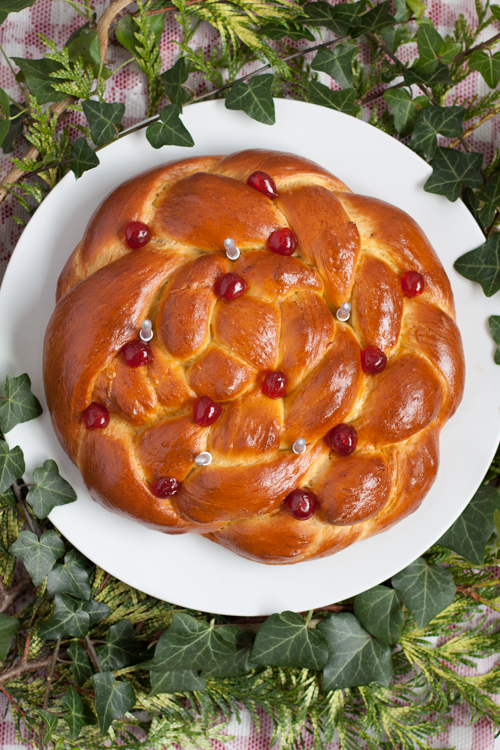
This recipe is part of a 3 part series currently featuring on the Borough Market website focusing on a few religious festivals celebrated in December, other than Christmas, and the foods associated with them.
St Lucia’s Crown is a plaited saffron bread that is baked for St Lucia Day celebrations in Sweden on 13th December. The dough can also be used to make lussekatter (saffron buns), a treat widely consumed on the day.
This is a traditional recipe for St Lucia’s Crown, with a little less sugar for a lighter, fluffier crumb. Many recipes add additional items, either to the dough (chopped almond, candied peel) or as decoration (glace cherries, dried cranberries, raisins, various glazes and icings). I used glace cherries for this recipe, as that is most common, but I would also recommend an icing or glaze if you like sweet things, as the bread itself is not very sweet. A glaze made with icing sugar, milk and a little lemon juice complements the saffron well.
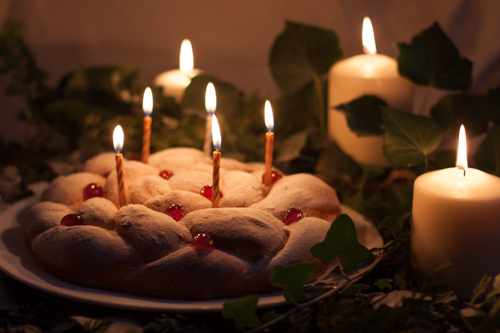
Ingredients
500g plain flour, plus extra for dusting and if the dough is too sticky
1 tsp salt
50g white granulated sugar
250ml whole milk
1 lemon, zest and 1 tsp juice
1 tsp saffron threads
7g active dry yeast
3 large eggs
60g unsalted butter, room temperature
1 tbsp icing sugar (optional)
Handful glace cherries, halved
Candles, for decorating
Method
Sift 500g flour into a large mixing bowl (the bowl of a stand mixer if you have one). Add the salt and sugar and whisk together. Set aside.
Put the milk and 1 tsp of lemon juice in a small saucepan with the saffron and gently warm over a low heat to 35C. Ideally use a thermometer for this, as yeast dies above 60C. (If you don’t have a thermometer test it on inside of your wrist; it should be body temperature.)
Remove from the heat and add the yeast. Leave for 10 minutes to activate.
Whisk 2 of the eggs together in a small mixing bowl.
Make a well in the centre of the dry ingredients and pour in the yeast mixture, eggs and add the butter. Whisk to combine.
If you are using a stand mixer, use the dough hook to knead the dough. If you don’t have a mixer, use your hands, but note that it gets very sticky.
Knead for approximately 10 minutes. If the dough is still very sticky you can add a little extra flour (up to 75g). When you have finished kneading, the dough will still be a bit sticky but elastic and smooth when formed into a ball.

Put a little oil in the bottom of a plastic bowl (not ceramic or metal – too cold) and place the dough in it. Cover with a tea towel and leave in a warm place to rise for an hour or two. It is ready when it has doubled in size.
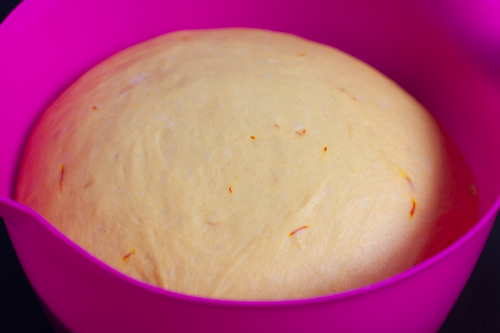
Put the dough on a large, floured surface and cut into three equal pieces. Stretch out into 3 long thin strands, approx. 800cm-1m long. To plait the dough start in the middle and plait one end then the other (this is easier than moving very long pieces of dough around).
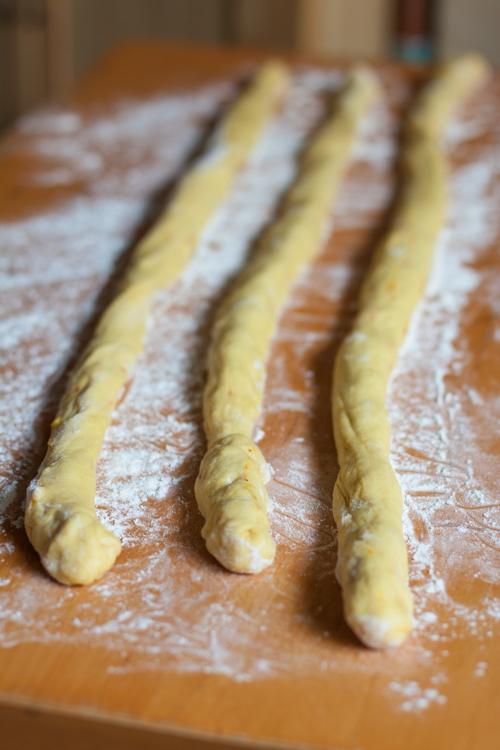
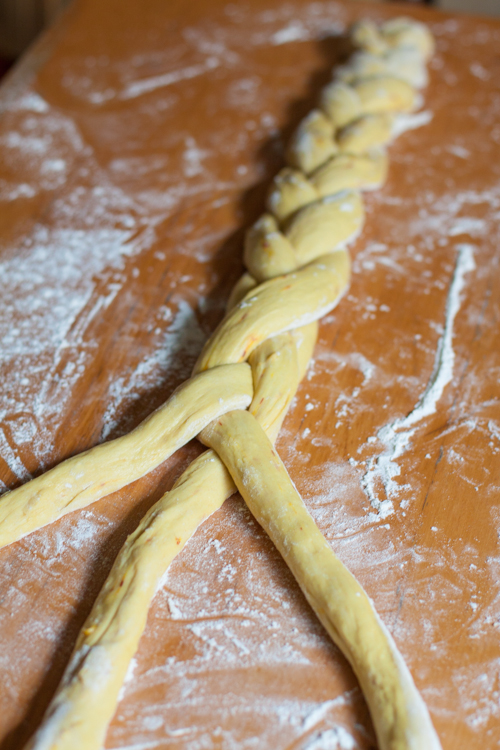
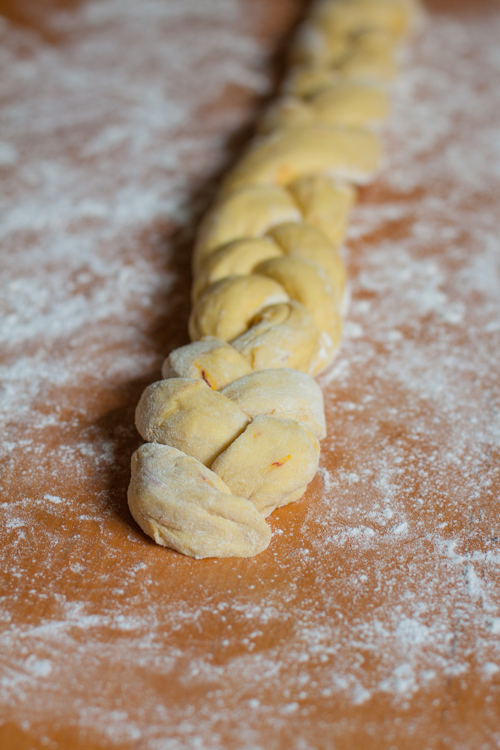
Curl the plait around into a circle and tuck the loose end under. Carefully slide onto a sheet of baking paper, then onto a flat baking tray. Loosely cover with cling film and leave in a warm place to rise for 30 minutes. It should almost double in size again.
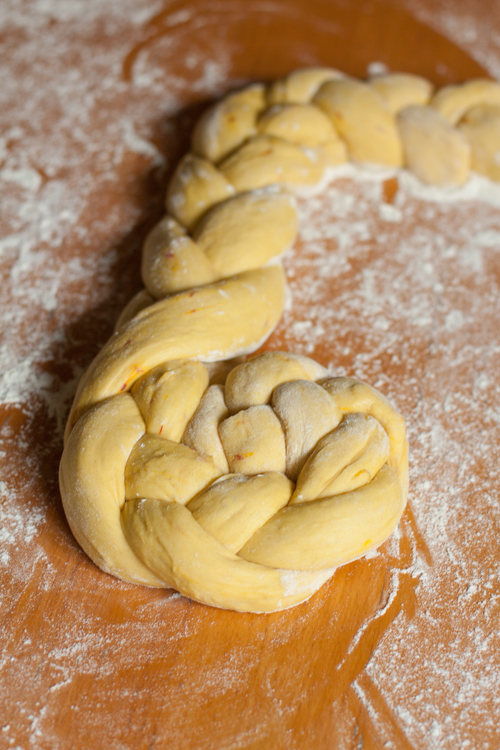
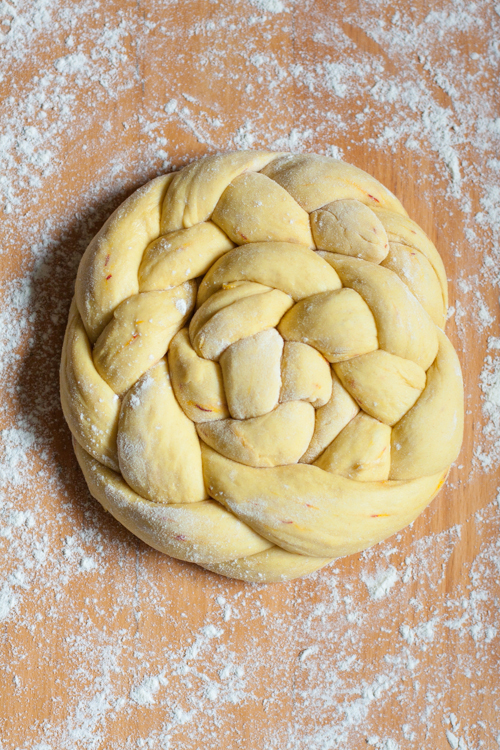
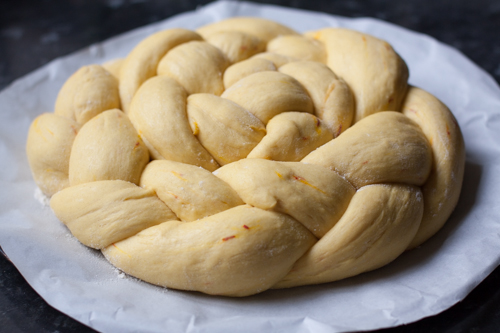
While the dough is rising, preheat the oven to 190C (170C fan oven). Whisk the remaining egg for the egg wash.
Brush the dough with the egg wash and bake for 20-25 minutes until golden brown. Slide carefully onto a wire cooling rack and leave to cool.
When cool, dust with icing sugar, if using (or glaze it instead, if preferred) and decorate with glace cherries. Add candles in a circle around the centre of the crown.
Read about how St. Lucia's Day is celebrated in Sweden here on my Food Anthropology page or here on the Borough Market website.
 Vix |
Vix |  Post a Comment |
Post a Comment | 
Reader Comments